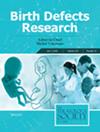Community-Engaged Research and the Use of Open Access ToxVal/ToxRef In Vivo Databases and New Approach Methodologies (NAM) to Address Human Health Risks From Environmental Contaminants
Abstract
Background
The paper analyzes opportunities for integrating Open access resources (Abstract Sifter, US EPA and NTP Toxicity Value and Toxicity Reference [ToxVal/ToxRefDB]) and New Approach Methodologies (NAM) integration into Community Engaged Research (CEnR).
Methods
CompTox Chemicals Dashboard and Integrated Chemical Environment with in vivo ToxVal/ToxRef and NAMs (in vitro) databases are presented in three case studies to show how these resources could be used in Pilot Projects involving Community Engaged Research (CEnR) from the University of California, Davis, Environmental Health Sciences Center.
Results
Case #1 developed a novel assay methodology for testing pesticide toxicity. Case #2 involved detection of water contaminants from wildfire ash and Case #3 involved contaminants on Tribal Lands. Abstract Sifter/ToxVal/ToxRefDB regulatory data and NAMs could be used to screen/prioritize risks from exposure to metals, PAHs and PFAS from wildfire ash leached into water and to investigate activities of environmental toxins (e.g., pesticides) on Tribal lands. Open access NAMs and computational tools can apply to detection of sensitive biological activities in potential or known adverse outcome pathways to predict points of departure (POD) for comparison with regulatory values for hazard identification. Open access Systematic Empirical Evaluation of Models or biomonitoring exposures are available for human subpopulations and can be used to determine bioactivity (POD) to exposure ratio to facilitate mitigation.
Conclusions
These resources help prioritize chemical toxicity and facilitate regulatory decisions and health protective policies that can aid stakeholders in deciding on needed research. Insights into exposure risks can aid environmental justice and health equity advocates.

 求助内容:
求助内容: 应助结果提醒方式:
应助结果提醒方式:


